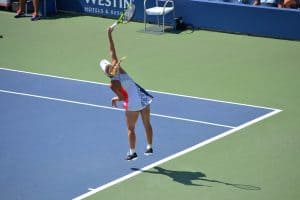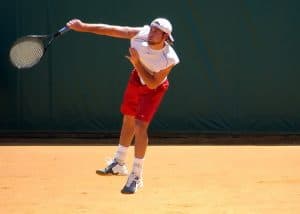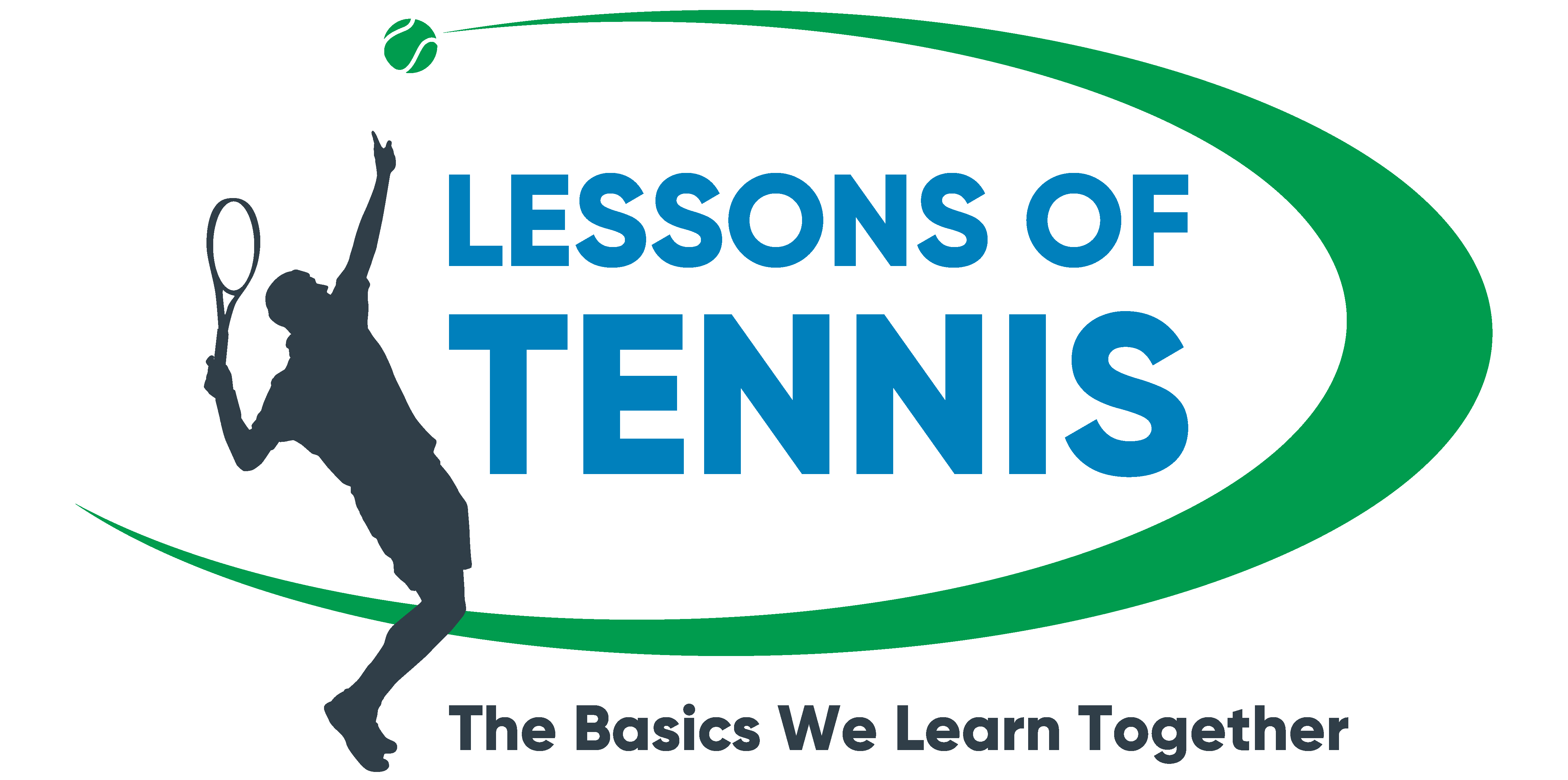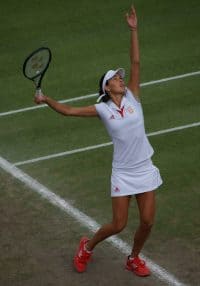The Elements of A Serve
If you want to know how to hit a proper tennis serve than we have to learn the elements of a serve. They are the Grip, the Stance, the Service Motion, Body Motion, the Toss, the Finish, and the Shot Recovery.

The Grip
The continental grip is the best way to begin your serve. You can and probably will adjust your grip as you find what works for you. The continental grip is achieved by having your heel placed on the octagonal plane pointed to the sky (position 1) and the base knuckle of your index finger on the first octagonal plane to the right (position 2).
There are many grip choices of course. Changing to a semi-western grip will give you a flatter serve. Using an eastern grip can help you create more topspin, giving you a kick serve.

The Stance
Your stance will be the same for the duece and ad court except you will rotate your body slightly to the left for the duece court, roughly 10 degrees. These instructions are for the ad court if your right handed, duece court if your left handed.
Stand with your back foot parallel to the net and your front foot pointed to the net post. The toes of your back foot should be lined up between the heel and the toes of your front foot. Your feet should be shoulder width apart for balance.
Begin with the ball about stomach level in front of you with the racket pressed on it. Your racket arm will be reaching across your body to meet the ball. This stabilizes your body. Your arms will be pointed toward your target. You are ready for motion.

Service Motion
Learning how to hit a proper tennis serve means finding a consistent motion. Begin your movement with your racket being pulled away from the ball as if drawing back on a pool cue. At the same time, drop your ball hand slightly to begin the ball toss. When your racket hand reaches your back hip, you will begin to raise your racket up in the air and behind your head. When the racket reaches its highest point your are in the “pose”.
The “pose” position is not really a position at all, but a transition from loading to acceleration. It is a slowdown, a slight hesitation before you unleash the fury of your serve. You should not be stationary during the “pose”. When in the “pose” the butt of your racket will be pointed directly away from the net. Your racket face will be facing the same direction as your body – perpendicular to the net.
As you motion to the “pose”, you will toss the ball with your other hand at the same time. Both arms will be going up in the air together. The toss should be about a foot in front of you. Your arm angle should be lined up with your shoulders and front foot. This will leave your arm pointed toward the opponent or net post or in between.
Just before you accelerate your racket forward, from the “pose” drop your racket head slightly. The racket handle should be perpendicular to the ground at this point. Now ACCELERATE your racket head up to meet the ball at the apex of the toss. Timing of your toss and your racket head meeting takes practice. Take the time to FOCUS on this and make it as consistent as possible.

Body Motion
As you prepare for your service motion your body should be balanced. As you begin, shift your balance forward ever so slightly before shifting it backwards as you bend your knees. You should drop your butt somewhere around 4-6 inches as you draw back to reach your “pose”.
As you reach your “pose”, some players like to draw their back foot forward. This can help with timing (or hurt), as well as help you adjust your balance (again, or hurt). It can be a useful tool or can become a distraction.
From the “pose”, push your body up and forward with your legs. Your balance will shift from back leg to forward as you spring yourself toward the ball. This full body motion incorporates the entire body into your serve for maximum power.

Follow Through Finish
As you finish, follow through your service motion fully. Your racket head should end up near your opposite hip. Land with both of your feet inside or on the baseline. From here you can recover to get into your ready position. Without this it is difficult to learn how to hit a good tennis serve.
Shot Recovery
Every shot needs a shot recovery, as you always have to prepare for your next shot. From your finish you can continue your forward momentum and adopt the serve and volley by rushing to the net. Or you can step back to outside the baseline and prepare for your return. Either way be sure to be in the ready position by the time the ball is hit by your opponent.
Successful Serve Repeated
The serve is the most repeatable of all the shots in tennis. It relies on no interaction with the opponent therefore is not dependent on physics outside of your control. It is the one shot you can hone because you control the arrival of the ball on your racket. Focus on consistency with your serve. Be able to repeat it with your eyes closed. This is how you know you will have a consistent serve. Now you can improve where you need and adjust how you want. Good luck out there!

